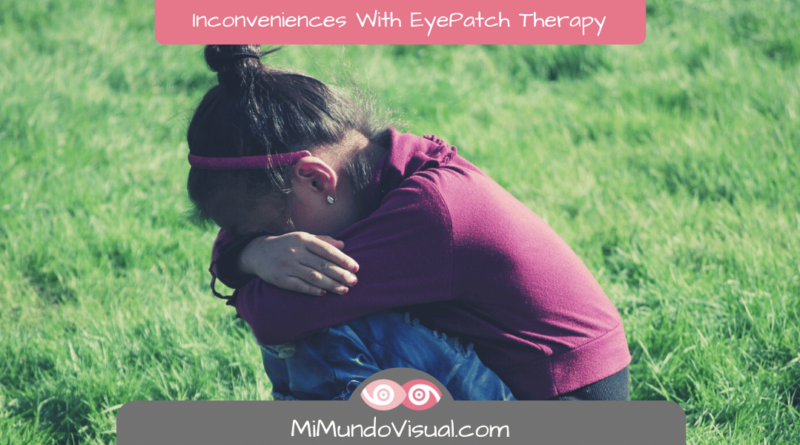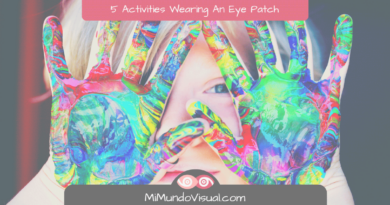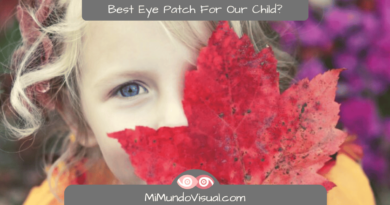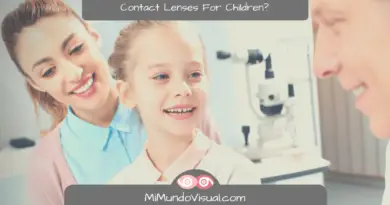6 Inconveniences With EyePatch Therapy We Are Not Told About?
Table Of Contents
All About Amblyopia Eye Patch Therapy
- 7 Tips On How To Be Successful With Amblyopia Therapy For Your Child
- How To Remove An Eye Patch Without Pain?
- 6 Eye Patch Therapy Inconveniences We Are Not Told About
- How To Choose The Best Eye Patch For My Child?
- 5 Activities To Do While Wearing An Eye Patch
Download Free Amblyopia Guide
Has your child been prescribed with Eye Patch Therapy? While it might not always be the case, certain inconveniences are not explained to us when we go to the ophthalmologist’s office. You are told your child has to wear an eye patch and glasses because they have amblyopia, also known as Lazy Eye, but are you properly informed about the related consequences.
Your eye doctor might have taken the time to lay out all the pros and cons of Occlusion therapy. In our experience, however, we have found it – rarely – to be the case.
How Eye Patching Can Have A Negative Side Effects
How Eye Patching Can Have A Negative Effect On The Eye
In this article, we would like to discuss 6 of those consequences or inconveniences that may (or may not) become a challenge for us.
Nevertheless, being aware is half of the battle. This way, you can take appropriate countermeasures to help the situation.
- The feeling of inferiority, lack of self-confidence, and self-esteem.
- Reduced performance at school and in life in general.
- Double vision
- Passive therapy
- Worsening of aesthetic appearance
- Skin problems caused by the glue
The eye patch can also have a negative impact on the child’s quality of life.

#1 Feeling of Inferiority, Lack of Security, and Self-Esteem:
The eyepatch may psychosocially affect the child’s relationship with their environment. An eyepatch can result in reduced social acceptance in school.
There are not many studies that have investigated the impact of a lazy eye from the child’s perspective, but we have found two particularly interesting studies:
- The Effect of Amblyopia on Self-Esteem in Children (‘Effect of Amblyopia on Self-Esteem in Children‘ Webber, Wood, Gole, and Brown).
- Self-perception of School-aged Children With Amblyopia and Its Association With Reading Speed and Motor Skills (‘Self-perception of School-aged Children With Amblyopia and Its Association With Reading Speed and Motor Skills’ Birch, Castañeda, Cheng-Patel, et al.).
As Webber and his team point out, most children with Amblyopia will need to wear glasses to correct their refractive error even after the occlusion period is over.
People wearing glasses oftentimes rate themselves as less attractive, which can have an impact on their psychological well-being, motivation, and behavior.
Recent studies show that children that wear eyepatches or glasses feel embarrassed, and what most affects this feeling of embarrassment are the responses of their peers. These children are 35% more likely to be victims of verbal or physical bullying.
At the same time, the investigators say that it could be psychosocially beneficial for the child if usage of the eyepatch could be minimized and limited to times of the day when the child has less social interaction.
The repercussions in terms of self-esteem and feelings of inferiority may accompany the child into adulthood.
#2 Reduced School and General Life Performance:
The most opportune time for occlusion therapy usually coincides when the child starts going to school, learns to read, write, and relates with the group socially.
When using Eye Patch Therapy or Occlusion Therapy is used, it may impair the development of other vital skills, as the dominant eye is covered and vision is reduced in the amblyopic eye.
Fine motor tasks of manual dexterity requiring precision and speed are impaired, as well as in sports activities. In addition, reading speed is impaired.
And all of this negatively affects the child’s self-perception, resulting in low self-esteem and a feeling of inferiority.
As indicated by Birch and his team, the results of their research indicate that the self-perception of amblyopic children is lower in their social, academic, and sports environment. This will affect the self-esteem of the school-age child.
#3 Double Vision (or Diplopia):
By covering one of the eyes, the brain is receiving only one image, that of the amblyopic eye. When uncovering the dominant eye, the brain receives the two images. One from each eye, and the brain does not know how to put them together to have only one image, so the child will see two.

#4 Passive Therapy:
Occluding one eye does not require any work or learning on the part of the person wearing the eyepatch.
It does not work on binocular abilities, accommodation, ocular motility, fixation, and peripheral vision is suppressed: By covering one eye, the possibility of seeing in 3 dimensions is eliminated since both eyes are needed for this.
In addition, part of the visual field is lost (the side of the eye that is covered), which will cause the child to stumble more often as they are not able to see if an object is coming towards them from that side. For example, when throwing a ball.
#5 Worsening Aesthetic Appearance:
By covering the eye, the eye deviation -if present- is not corrected. Moreover, the eye may become deviated, thus increasing the degree of strabismus.
#6 Skin Problems Caused By Glue:
Eyepatches that use glue can cause irritation on the skin of children and, sometimes, small wounds. There are some eye patches that are hypoallergenic. Try to choose the best eye patch!
Development Apparatus Is Essential
Visual development is essential to our overall development, so if our vision is not developing normally, our overall development will also be slowed.
As stated by the American Optometric Association:
- ‘Treatment for Lazy Eye may include a combination of prescription lenses, prisms, vision therapy, and eye patching. In vision therapy, patients learn to use both eyes together, which helps prevent some forms of Amblyopia from recurring.’
- ‘Early diagnosis and intervention increase the likelihood of recovery, which is why the AOA recommends that children have a complete optometric exam at 6 months of age and again at 3 years of age.
If a Lazy Eye were detected and diagnosed before the child enters school and socialization with the group, they would be less likely to be embarrassed and self-conscious about eye patching treatment. So before the child begins to gain a sense of self and self-esteem.
In closing, let’s do a little exercise: As a parent, it can be helpful to put ourselves in our child’s shoes for a moment:
Let’s take one of their eye patches and wear it for some time while we do all kinds of tasks: reading, writing, playing ball with our kids, or just walking around the house.
Let’s feel how it feels to do any task, no matter how small, with one eye covered and experience how uncomfortable it really is and how disabling it makes us feel.
If we feel brave enough, let us go out to the street and interact with other people to learn what kind of a feeling it pro that others see us with an eye covered by an eye patch.
Let’s not forget that the other eye still has good vision when we cover one of the two eyes. Now let’s remember that in the case of Amblyopia, we are covering the eye that sees better and leaving the weaker eye to provide us with all the visual information. And that visual world which is more blurred and less clear, is what our child sees during the hours they wear the eye patch.
Vision Therapy Exercises
- Eccentric Circles
- Lifesaver Cards For Convergence And Divergence
- Mazes as Vision Therapy Exercises!
- Brock String
- Marsden Ball
- 5 Activities To Do While Wearing An Eye Patch
- Lazy Eye – 5 Games And Activities For Adults
Download Our Lazy Eye Guide!





